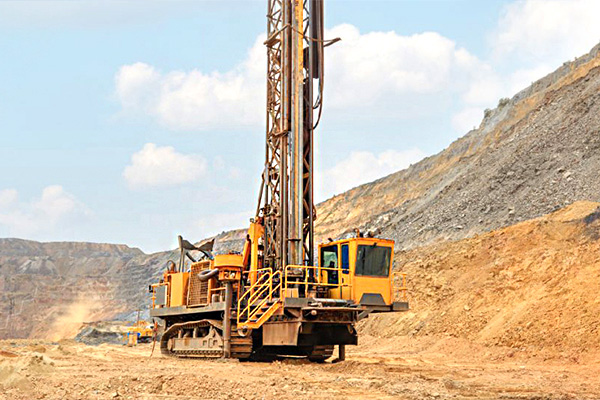In the oil, gas, geothermal, and engineering drilling industries, choosing the right drilling equipment can directly impact operational efficiency and return on investment. As we approach 2025, the market is evolving rapidly with new technological advancements and increased competition. Buyers are faced with an overwhelming array of options, but how do you ensure you’re selecting the most cost-effective equipment? This comprehensive drilling equipment procurement guide will help you navigate the decision-making process and make an informed purchase.
1. Define Your Needs: Narrowing Down the Equipment Type
Before making any purchases, it is essential to clearly define your operational needs. Different drilling projects—whether they are land-based, offshore, or shale gas drilling—require different equipment specifications. For instance, shallow drilling operations prioritize mobility and cost-effectiveness, while deep-water or high-pressure wells require advanced torque capacity and durability.
Pro Tip: Start by listing the critical project parameters such as drilling depth, rock formation hardness, environmental conditions, and pressure levels. This helps eliminate unsuitable options early in the process.
2. Focus on Performance Over Brand Premium
Many buyers are swayed by well-known brands in the drilling equipment market, but it’s important to remember that performance is the true determining factor in equipment selection. Here are a few essential performance characteristics to consider when evaluating drilling rigs:
- Power Systems: Ensure the equipment delivers stable power output with lower fuel consumption.
- Control Systems: The rig should feature a modern, automated control system that supports remote monitoring, real-time diagnostics, and fault detection.
- Modular Design: Look for equipment that is easy to maintain and upgrade, helping you extend the life cycle of the machinery.
- Safety Features: Confirm that the equipment complies with the latest international safety standards to minimize operational risks.
It’s worth noting that several newer, innovative brands are now offering equipment that rivals the performance of established brands. By focusing on the product’s actual capabilities, rather than its reputation alone, you can often find superior value for your investment.
3. Consider Total Cost of Ownership (TCO) Over Initial Cost
When purchasing drilling equipment, it’s easy to be drawn into choosing the cheapest option upfront. However, the total cost of ownership (TCO) should always be a deciding factor. TCO accounts for factors beyond the initial purchase price, including:
- Maintenance and Repair Costs: Does the equipment require frequent repairs or is it designed for easy maintenance?
- Operational Costs: How much fuel does the equipment consume? How efficient are the power systems?
- Depreciation: How well does the equipment hold its value over time?
- Downtime: How often will maintenance or breakdowns cause delays in your operations?
By evaluating the long-term costs associated with a piece of equipment, you can make a more informed decision that balances the upfront price with future savings.
4. Ensure Compatibility with Your Existing Systems
Another often-overlooked consideration is whether the new equipment will integrate smoothly with your existing operations and infrastructure. Compatibility with other tools, rigs, and software systems can make a significant difference in efficiency and cost reduction during operations.
- Software Integration: Does the drilling equipment feature software that can interface with your existing fleet management or monitoring systems?
- Interchangeable Parts: Will your existing spare parts, tools, and accessories be compatible with the new equipment?
- Crew Training: Will your team require significant retraining to operate the new machinery, or can they transition smoothly?
Selecting equipment that integrates easily into your existing setup can reduce downtime and additional costs associated with training and adaptation.

5. Review Warranty, Support, and Service Packages
It’s essential to consider the after-sales service offered by the equipment manufacturer. A strong warranty and comprehensive service package can be a game-changer in the event of equipment failure or downtime.
- Warranty Coverage: What is the duration of the warranty, and what does it cover?
- Maintenance Support: Does the supplier offer ongoing maintenance support or a service contract?
- Spare Parts Availability: How easy is it to source replacement parts when needed?
A robust after-sales package provides peace of mind and can help you avoid unexpected expenses down the road.
6. Research Supplier Reputation and Customer Reviews
Lastly, the reputation of the equipment supplier is crucial in ensuring you’re making a sound investment. It’s a good idea to research the supplier’s history in the market and look at customer reviews for insights into their products’ reliability and performance.
Pro Tip: Check customer testimonials and case studies to see how the supplier’s equipment has performed in similar projects. Reach out to other operators in your industry to get their feedback on different manufacturers and models.
Conclusion: Making the Right Choice
At BESDRILL, we offer a wide range of high-performance drilling equipment designed to deliver exceptional value at competitive prices. Explore our selection today to find the perfect solution for your next drilling project.
Choosing the right drilling equipment is not just about purchasing machinery—it’s about selecting a long-term partner that will support your operations. By focusing on performance, cost efficiency, and the total cost of ownership, you can identify the equipment that will best meet your needs in 2025 and beyond. Take the time to define your needs, do thorough research, and choose a supplier who provides quality products and excellent support.